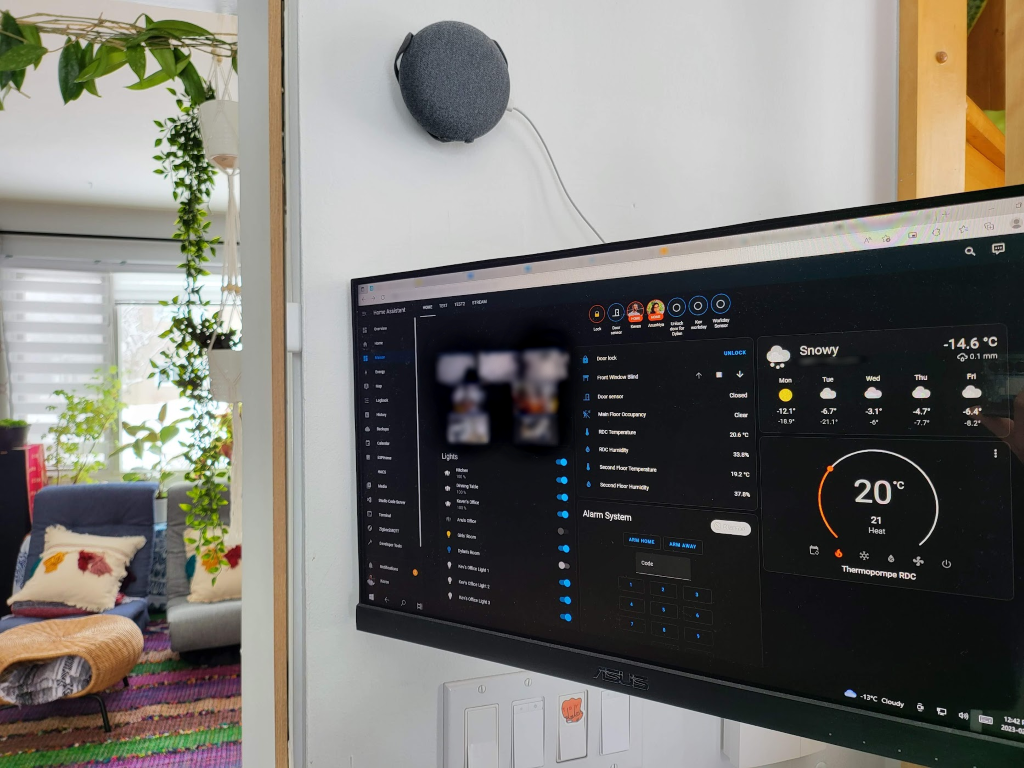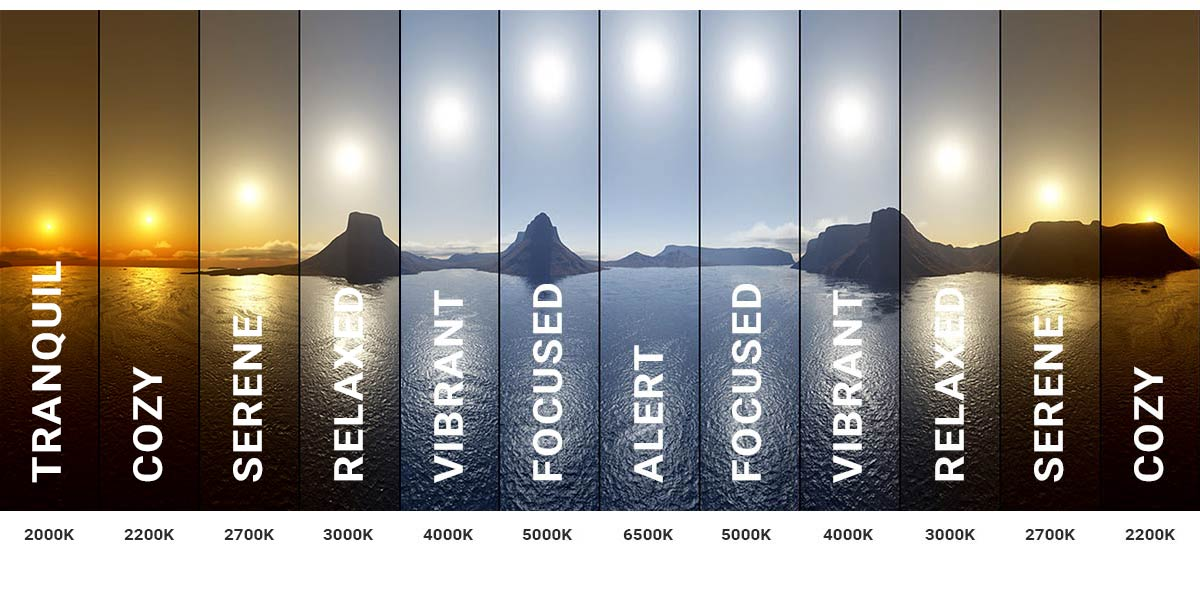4. Home Assistant
I've been using Home Assistant for years now, and while I have many items on my to-do list, I thought I could share what I currently use Home Assistant for and what is my setup. I tried several integrations and devices through the years. Some I came to love, some to forget, some to regret and finally, some to full-heartedly hate (looking at you, Tuya).

The Thing / Main Controller / Smart Hub / Keven hasn't named me 😢
But even after a few years of use, I feel like I'm still an amateur user. Home Assistant has so many features and so many integrations to play with, I feel like I'm just getting started!
Home Assistant can be very intimidating at the beginning. I wasn't used to the YAML syntax and there was a bit of a learning curve there, but I quickly started to like it. What's not to love in being able to manage my automations in VS Code. I'm sure there's an amazing UI for it in HA by now but nope, thanks, I'm YAML team!
But yeah, reading about all the automations, the devices, the protocols, the configurations, it can quickly become overwhelming. If you're looking to get started but feel overwhelmed, just do it! It quickly gets addictive 😃.

My setup
There are several ways to install Home Assistant, and it can be installed on many different types of devices. It doesn't need to be installed on a dedicated hardware, too. It can run inside a Docker container, for example. However, this makes a ton of add-ons unavailable. You could also decide to install a flavor of Linux with systemd and install Home Assistant on it yourself. I personally chose to go with the Home Assistant Operating System.
From my reading on forums, it looks like a lot of people install it on a Raspberry Pi. Pis aren't exactly cheap in Canada, and they're not that easy to get. I'm also never fully sure of what my use of HA (Home Assistant) would or will be. It's such a powerful piece of software and it has so many cool integrations that I preferred having something a bit too powerful than the contrary.
Off-lease reconditioned PCs, on the other hands, are easily available. So that's the way I went, and it's pretty much always the way I go when I need a new machine for a project or a server. I highly recommend taking a look at the Bauer Systems Group's Price List if you're in Canada and are looking for a low-cost option for a small server. I love the Tiny/Micro form factor. SSF is a good size too. You can read more about my Home Lab!
The Home Assistant Operating System (formerly HassOS) can be installed on a lot of hardware, including:
- Raspberry Pi
- Hardkernel ODROID
- Asus Tinker Board
- Generic x86-64 (e.g. Intel NUC or any PC really)
- Virtual appliances
The hardware
Server
Since the PC I was installing Home Assistant to was, in my opinion, too powerful to only run HA, I went with the latest option from the previous list: virtual. I like to try to maximize the use of every computer I own, so I installed Proxmox and virtualized Home Assistant through a Virtual Machine.
The VM's specs are:
- CPU: 1 socket, 2 core
- RAM: 4 GB
- HDD: 32 GB
Complementary hardware:
- Current Zigbee coordinator: CC2652P
- Connected to the host with a USB extension cable
- New Zigbee coordinator waiting for installation: SMLIGHT SLZB-06
- Will be connected to the network directly and powered through POE
- It is made by a small two-persons Ukrainian company named SMLIGHT and founded in 2021. They were producing their hardware in Kiev but since the war started in Feb 2022, they outsourced the production to China
Clients
We use Home Assistant mainly through the Hub (picture at the top of the page), our phones and smartwatches.
Main Hub
The Main Hub (the picture at the top of the page) is a small ThinkCentre M700 running Windows 11 with a Core i3-6100T, 8GB RAM, 256GB SSD. The monitor is the ASUS VT229H 21.5" and is multipoint touch. The PC cost us $275 and the monitor $200. We really like that setup. It's placed near our entrance in the back, so we use it to control the smart home, but also to check the weather, check the kids' school calendar, etc.
The integrations / smart devices / services
- ESP32 to track BLE devices:
- Xiaomi thermometers (LYWSDCGQ & LYWSD03MMC): temperature, humidity
- HHCC Flower Monitor (HHCCJCY01): temperature, moisture, ambient light and nutrient levels in the soil
- Zigbee through zigbee2mqtt. Current devices:
- Smart Deadbolt (Schlage)
- Roller blind motor (Generic TuYa TS0601 from AliExpress)
- Motion Sensor (Aqara RTCGQ11LM)
- Door Sensor (Aqara MCCGQ11LM)
- Smart siren / alarm (HEIMAN HS2WD-E)
- Bunch of smart bulbs
- TuYa TS0505B
- Sengled Zigbee Smart Light Bulbs
- HACS: awesome tool to install & manage more custom integrations
- Tuya: I have a few Wi-Fi smart bulbs and plugs that I bought on AliExpress. I don't like devices that use Tuya (more about that here) and I'm slowly moving away / replacing them for Zigbee devices. Real bummer since I invested quite a lot of money in these Wi-Fi devices when I started getting into smart devices.
- localtuya: After my experience with Tuya, I decided to try out localtuya and it works well! I moved a few devices to it, but I ended up switching to Zigbee so that's still a WIP.
- Midea Aircon: allows us to control my Senville heat pump through HA.
What I particularly like
There's a lot I like about our Home Assistant setup, but here are the highlights.
My favorite automations and features
- The smart lock unlocks the door at set times, e.g. when the kids are expected to come back from school. They don't need a key, and they can't lose a key they don't have.
- Smart Speakers tell the kids to get ready for school and to leave at specific them, so we don't have to watch the time. A bit earlier in the winter because it takes longer to get dressed vs spring/autumn. Eventually I'd like to take the weather into consideration to dynamically remind them, for example, to bring a raincoat because it might rain on the way back.
- The kids' light turn on automatically at set time in the morning to let them know they can get up. If the light isn't on, it means it's still time to sleep! Remarkably useful. They also turn off automatically around 8AM since they're not needed anymore, and turned back on in the evening. We currently turn them off "manually (OK, Google!)" after kissing them goodnight.
- The door automatically unlocks for my wife and I when we approach the house, and we get a notification on our watch to let us know that it's now unlocked.
- The lights change based on the sun position, which is used to calculate the color temperature and brightness that is most fitting for that time of the day. Scientific research has shown that this helps to maintain your natural circadian rhythm (your biological clock) and might lead to improved sleep, mood, and general well-being. And let me tell you that it does for us!
- When away, if the door is unlocked/opened, I get an instant notification on my phone with a picture from the main entrance's camera.
- When away, I can unlock the door remotely. It's been hugely helpful, for example when we were 200 km away for my wife's birthday and one of her friends didn't let me know that she was getting flowers delivered at our place. The delivery lady at least was provided my number and called me to ask where she could put the flower, she couldn't really leave them outside at -20 °C. I was able to quickly unlock the door for her and watch her leave the flowers on the table with the indoor cameras.
- Adjust the heat pump temperature (e.g.: in the winter, reduce the temperature considerably during the night)
- Being able to open & close the blinds by the press of a button. I feel like I'm living in the future 😆. Eventually I'll automate them with the sunrise / sunset.
- I didn't receive my plant's moisture monitor, but I'm looking forward to being able to automate a notification to water the plant. It'll be useful too when we're away for an extended amount of time so that I can ask a family member to go water specific plants 😊.
- Having an alarm for when we leave for more than a few hours (eg: sleeping away). It's insanely loud and have proven itself reliable so far for when I forgot to disarm it (sorry sister 😅!).
Adaptive Lighting

This is my #1 favorite, by far. I find it amazing to always have the perfect lighting in the house. That's when I actually stop to think about it, because otherwise, I really never think about it. That's how cool it is. I don't have to think to reduce the brightness of a light or feel like a light is too bright, too warm, too cold. It's just almost always perfect. I say almost because I did find myself having to take manual control once in a while but there are such isolated and rare events that they're not even worth mentioning. I highly recommend looking at this integration (link).
Zigbee / zigbee2mqtt
I really like Zigbee as a protocol, it feels solid and stable. I can buy any brand and rely on zigbee2mqtt to have an adapter for it. And if there's none, I can create one and open a PR so that everyone can benefit from it, which is actually what I did for the Schlage Smart Deadbolt I bought off Amazon without any review. I can also buy a different coordinator / router if I'm not happy with the one I have. Zigbee devices are not the cheapest, but also not the most expensive and are usually good quality. IKEA has a good variety of devices and is a big name. Xiaomi (Aqara etc) also makes a wide variety of amazing Zigbee devices. IMO, the choices are much better than Wi-Fi devices. I never tried Z-Wave, so I have nothing to say about it.
Aqara / any Xiaomi devices
They're just well-made, reliable and have good community support.
What I can live with
localtuya
localtuya is a very good alternative to the official tuya integration. It's reliable and, from my experience, pretty fast.
What I dislike
I don't like smart 2.4Ghz Wi-Fi devices. They're picky on the signal, often have delays, and can easily become unavailable. On top of that, most of them communicate to the outside world through your Internet connection, which is definitely something that I personally find concerning.
Tuya
I really dislike the Tuya integration, it's a PITA to maintain, it often breaks or disconnects, has often long delays, communicate straight from your home to China, etc. I tried buying "better" (I thought) bulbs from Costco from a reputable brand, Globe, and I dislike them just as much, if not more since they were a bit more expensive.
What I look forward to trying
- Energy consumption: I'd like to know my consumption by breaker and/or devices.
- Use the weather conditions more.
- Have more of the simple automations (motion detect → turn on light).
- Use my existing sensors more (currently have no automation based on temperature or humidity).
- Monitor the indoor air quality.